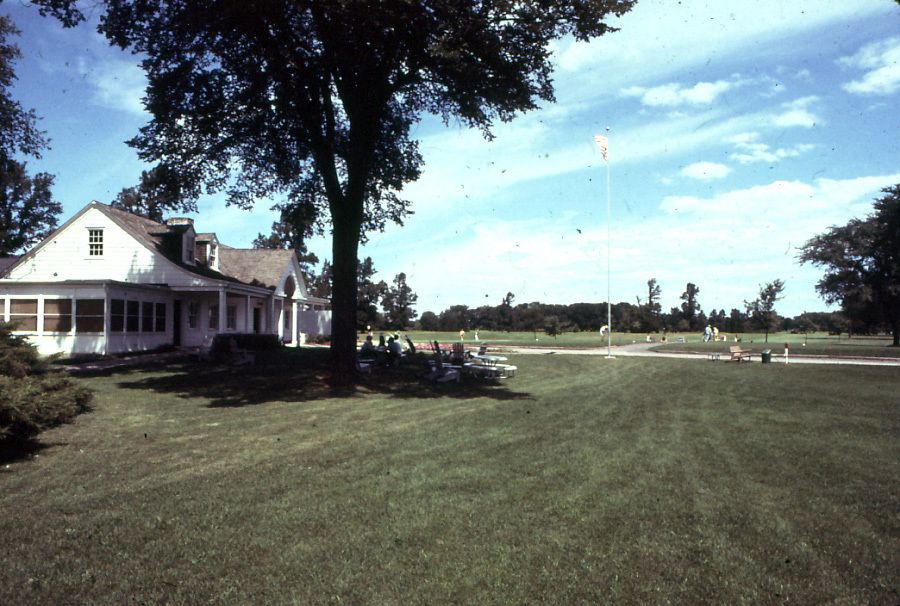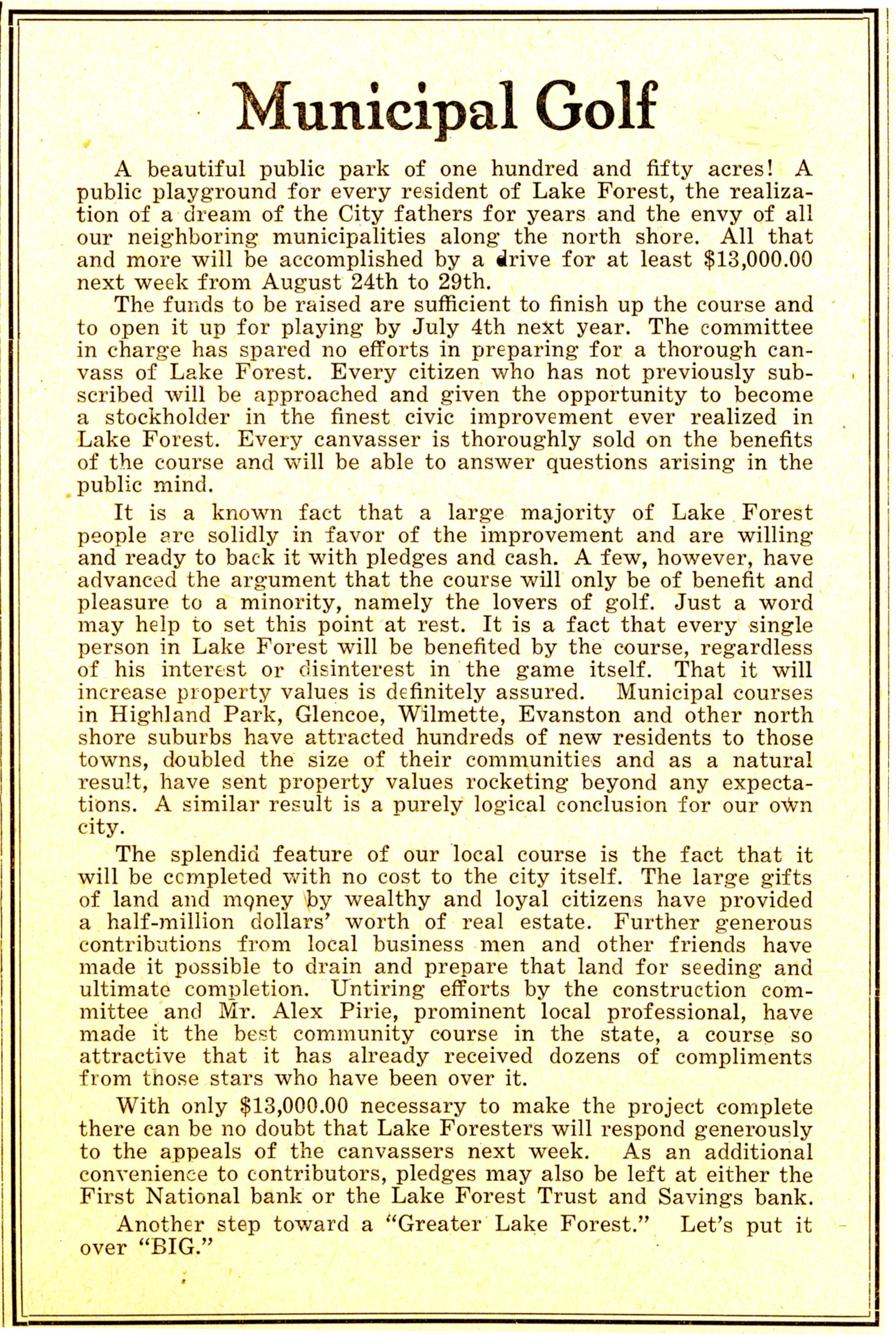Deerpath Golf Course: Golf for Everyone

With golf at local private clubs booming and the twenties starting to roar, in 1922 Lake Foresters began to clamor for a public course. Mayor Henry Rumsey heeded their call, seeing in it a project that might promote unity among his burgeoning population of citizens. A number of local families, led by A. B. Dick, Noble Judah, and realtor John Griffith, donated large tracts of land to the city to be used for recreational purposes only—any other use would cause it to revert back to the donors.

By 1926, funds were appropriated and land was readied for Alex Pirie to lay out the first nine holes. (The second nine were added in 1931.) Upon its opening, players dubbed the new course “The Bumps” due to its early lack of trees and foliage, although the Lake Forest Garden Club set to work right away to remedy that with new plantings.

In offering golfing opportunities to a wider audience, Deerpath proved to be a great draw, with initial membership fees set at $18. Early on, Lake Forest businesses even closed at noon every Wednesday so employees could get in a round of golf.

As wide expanses of land with a low concentration of buildings, golf courses proved useful for purposes beyond hitting and putting. In the 1930s the Deerpath Golf Course was used as a landing point for the U.S. test airmail service, which made a number of stops between Chicago and Waukegan. The above photograph was taken near the clubhouse during the summer of 1937. It shows a Ryan Sport-Coupe aircraft landing and taking off at the course. The Ryan S-C was a three-seat monoplane with a 37-foot wingspan and a maximum speed of 150 mph.